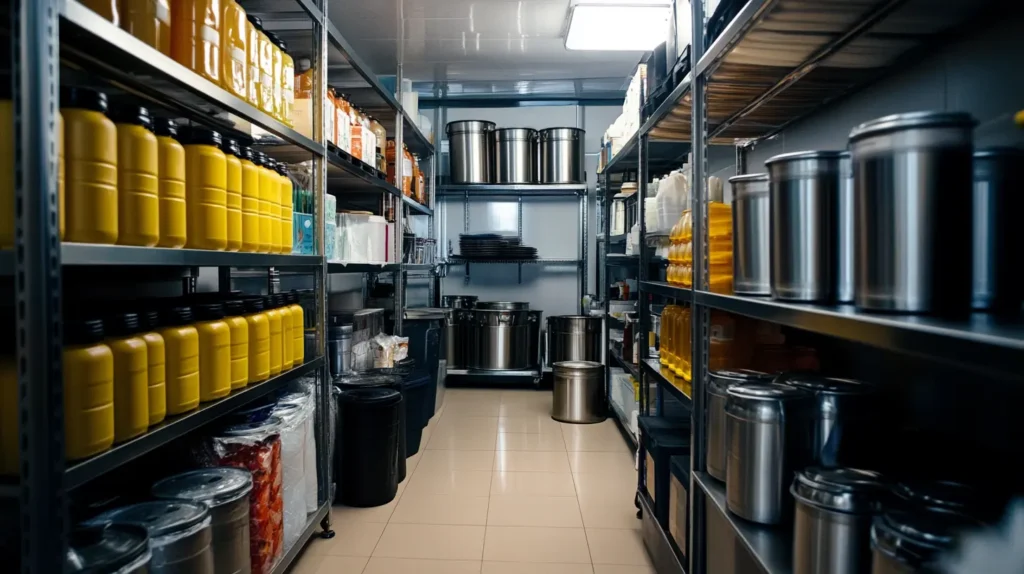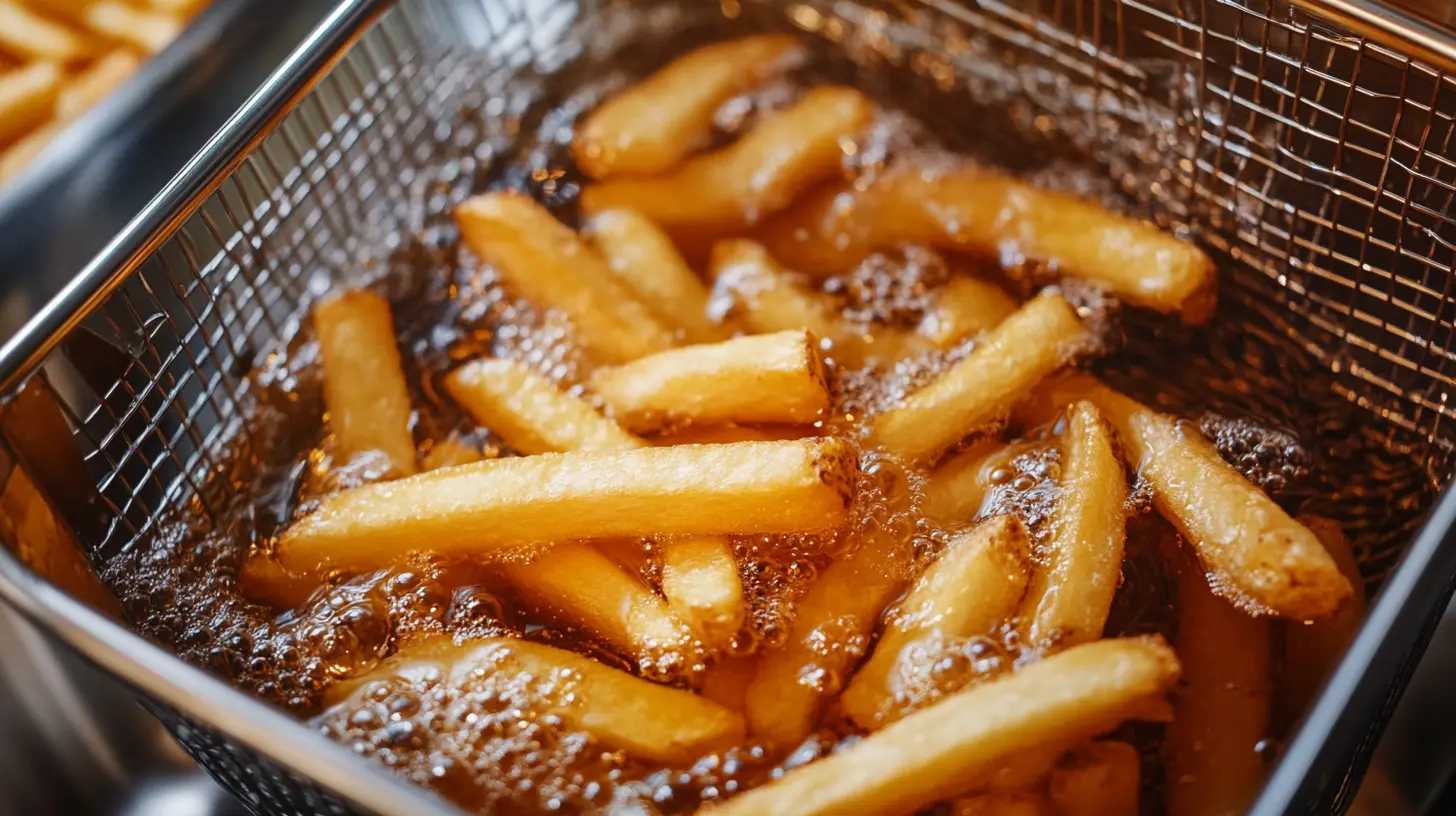The sound of food hitting the fryer is like music to your ears—promising delicious results. But behind that sizzle lies the challenge of skyrocketing oil costs and growing environmental concerns. With soybean oil prices experiencing significant increases over the past few years, finding effective fry-oil reduction strategies is no longer optional—it’s essential.
As your kitchen buzzes with activity, you need solutions that not only maintain your culinary standards but also keep your environmental impact and costs in check. The good news? With a few smart adjustments, you can cut your oil usage drastically while enhancing the quality of your fried dishes. Here are 16 essential strategies that can transform your commercial kitchen into a model of efficiency, sustainability, and profitability.
Fry-Oil Reduction Strategies
Managing fry oil well is more than following rules. It’s key to keeping good taste, quality, and safety in your kitchen. Learning how to make fry-oil last longer can improve health and save money. Here are some effective methods to prolong fry-oil quality and extend the lifespan, ensuring optimal performance and taste in your kitchen.
- Thaw Frozen Foods Properly
Ensure frozen food is fully thawed before frying to keep moisture out of the oil, extending its lifespan. - Control Frying Temperatures
Maintain frying temperatures below 250°F when not actively cooking to prevent oil breakdown. - Use Lids to Cover Fryers
Cover fryers when not in use to reduce air exposure and slow oil degradation. - Avoid Soap in Cleaning
Clean fryers with boiling water or special solutions, as soap can leave harmful residues. - Season Foods Away from Fryer
Season foods away from the fryer to prevent seasoning particles from contaminating the oil. - Timely Removal of Food Particles
Regularly remove burnt bits and food particles from the oil to maintain its purity. - Implement Regular Filtration
Filter oil regularly to remove impurities and extend its usable life. - Air Frying
This technique reduces oil consumption in fryers by up to 80% while also lowering the fat content in food. - Proper Coatings
Use coatings that absorb less oil, such as non-traditional flours that retain more water, to reduce oil consumption in fryers effectively.

- Regular Change and Filtration
Change and filter oil regularly to keep it fresh, ensuring better flavor and safer cooking. - Avoid High Temperatures During Idle Times
Lower temperatures during non-cooking periods to slow down oil degradation. - Proper Storage with Minimal Air Contact
Store oil in sealed, non-reactive containers away from air and sunlight to prevent oxidation and spoilage. - Use Bulk Oil Delivery Systems
Opt for bulk oil delivery systems that pump oil directly into storage containers, reducing contamination risks and improving oil quality. - Implement Built-In Filtration Systems
Utilize built-in filtration systems that automatically clean and reuse oil, extending its life and maintaining food quality. - Consider Oil Additives
Use oil additives like antioxidants that can stabilize fry-oil and slow down the rate of breakdown, enhancing its lifespan. - Utilize Smart Technology for Oil Filtration
Incorporate smart technology like automated filtration systems that enhance oil lifespan and reduce operational costs by minimizing manual labor.
By following these tips for longer fry-oil quality, your kitchen works better and supports environmental goals. A bit of thoughtfulness goes a long way in improving food quality and saving money.
Optimizing Fry-Oil Storage
How you store oil is key to keeping its quality. Non-reactive materials for oil tanks should be used, and they should be kept clean to stop contamination. To keep fry-oil good for longer:
- Seal tanks and keep them out of the sun to stop oxidation.
- Keep oil at a steady temperature to prevent damage.
- Limit air contact to slow down oil going bad.
Powerful Fry-Oil Management Gains for Your Business

By improving fry-oil use, we can reduce oil consumption. This leads to several benefits in commercial kitchens.
First, cutting down on fry-oil use saves money and helps the planet. Next, kitchens can use filter technologies to make oil last 50% longer by removing harmful food particles. This reduces waste and environmental harm. Plus, clean oil at the right temperature makes fried foods taste better and saves oil. Ideal temperatures are:
- Minimum frying temperature: 350°F (175°C)
- Maximum frying temperature: 375°F (190°C)
Lastly, smart oil management means safe and eco-friendly oil use. Recycling your oil shows a commitment to sustainability.
This ethical approach can also lead to financial rewards. Check out these benefits of good practices:
| Feature | Benefit |
| Utilization of a Filter | Less time spent on fryer maintenance due to easy operation |
| Oil Quality Monitoring | Prevents degradation of oil, reducing frequency of replacement |
| Sustainable Disposal | Enhances CSR (corporate social responsibility) image and offers rebates |
Make Every Drop Count with Save Fry-Oil Reduction Strategies

Implementing these fry-oil tips—from proper storage techniques to filtration methods—can dramatically reduce costs, enhance food quality, and support environmental sustainability. Take the first step towards transforming your kitchen today! Implement these fry-oil reduction strategies and witness the immediate impact on your costs, food quality, and environmental footprint.
Need more help? Visit Save Fry Oil for expert advice and tailored solutions to keep your kitchen running efficiently and sustainably.
FAQ
What are the best fry-oil reduction strategies for a commercial kitchen?
To cut down on deep fry-oil use, start by filtering it regularly. Keep an eye on cooking temperatures. Make use of equipment that saves oil.
Teach your team how to handle fry oil wisely. Looking into automatic filtration systems could also be a game-changer.
Why is managing fry-oil important in a commercial kitchen setting?
Handling cooking oil right is key for top-notch food, smooth kitchen operations, and safety. It’s also eco-friendly. It avoids accidents and keeps the kitchen running well.
Recycling oil can even bring in some extra cash.
What are effective storage techniques to prolong oil life?
To make oil last longer, store it properly. Cover it to shield it from air and dirt. Keep it at the right temperature.
Avoid places with too much heat or sunlight. They can spoil the oil quickly.
What are good tips for extending fry-oil lifespan?
Filtering the oil often is a good start. Keep the fryer at the right heat. Steer clear of contamination. Handle the oil with care.
These steps will help you use less oil and save money.
How do I address oil degradation factors effectively?
Keep the oil at the perfect temperature. Stop water and bits of food from getting in the oil. Store oil the right way. Protect it from light, air, and extreme heat or cold to prolong the quality of the oil.
Source Links
https://www.simplotfoods.com/blog/10-ways-to-take-the-sting-out-of-fryer-oil-costs
https://www.darpro-solutions.com/media/blog/food-waste-2023
https://www.kingarthurbaking.com/blog/2023/03/30/how-to-reuse-and-discard-frying-oil
https://blog.mtiproducts.com/fry-oil-management-101
https://www.ncbi.nlm.nih.gov/pmc/articles/PMC10660127
https://www.heatandcontrol.com/blog/industrial-frying-how-maximize-cooking-oil-life
https://www.rti-inc.com/learning-center/oil-management-101/
https://www.usoilsolutions.com/fryer-oil-management-tips/
https://www.industrykitchens.com.au/Blog/oil-filtering-deep-fryer
https://simcogroup.com.au/blog/post/ten-ways-to-minimise-oil-waste-in-your-commercial-deep-fryer
https://www.ncbi.nlm.nih.gov/pmc/articles/PMC10888343
https://www.atlantis-press.com/article/125994463.pdf
https://www.frontiersin.org/journals/nutrition/articles/10.3389/fnut.2023.1297069/full








